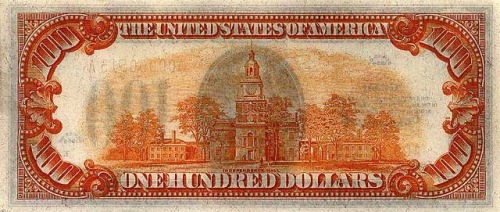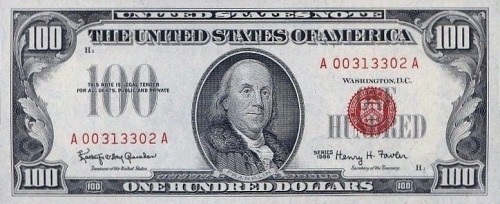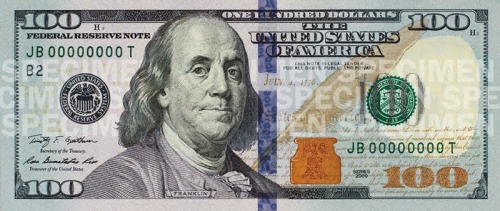#thomas hart benton
Numismatics is the study of currency, money, and its uses thereof. U.S. Currency is noteworthy for several reasons:
(ha! “note” worthy! Get it? It’s another of my famous puns. You lucky, lucky bastards…)
Anyways:
-Did you know that US currency is the only money where the notes are all the same size? People in Europe refer to USD as “Monopoly Money” for that reason. Seriously.-Since 1969, the largest denomination in circulation of US currency is the $100 Note. On top of that, there are far more people in the U.S. than there are $100 notes. Consequently, whenever you use a $100 note, most people would be smart enough to verify the authenticity of the note!
So, starting from the top:
-Yup. The first issuing note of $100 from the U.S. Treasury featured Lincoln on the note. It was in 1862, one year before his assassination, and in the midst of the Civil War.
-The next series was put into Circulation in 1870. It featured Senator Thomas Hart Benton (Missouri) on the note. He was most closely associated with the “Manifest Destiny” idea of westward expansion. Also, do you see where it says “GOLD” all over the note? US Currency is ensured in value by our stores of gold bullion, which are kept in places like Fort Knox, Kentucky or the Federal Reserve Bank, in NYC.
-1914 Was the first time Benjamin Franklin made his appearance on the note. That is Independence Hall on the back (it is where the Liberty Bell is: in Philly.)
-1966 Was the next series. I kinda like the typography on that note. It is kinda cool looking. It also has a new seal of the US Treasury, and the Latin has been replaced with English. It was issued because of a bunch of changes internally, and because of a decrease in the amount of currency in circulation.
-Series 2006A was the next release of the note. It was actually released in 1996, but was renamed the 2006A because it underwent numerous changes to stop counterfeiting efforts.
-the most current version of the currency from 2009. Current Currency designs are often subject to recalls, modifications, and so forth. (Current Currency is the correct terminology. it is also alliterative, with the same root for each word. Do you KNOW what that means? It means that I have given you lucky bastards TWO examples of my stunning word-play, in only one post! You guys hit the freaking jackpot with me!) The 2009 series was DESIGNED in 2009, but was released in 2011, recalled and replaced with an uncolored version (some kind of problem with creasing), and the next series is set to be released in October of 2013.
It is actually kind of interesting, when you read about it. Also, look at world currency pictures at some point. They’re often quite beautiful. Another thing to look for: in the UK, Coins issued with the Portrait of the Queen are issued with her age correct for the date of issue. So, the first coins released under her reign showed a young woman. Now, they show her to have aged quite considerably.
Post link

More needed Thomas Hart Benton content
Ft. manhandling 2/3 of the triumvirate
Thomas Hart Benton (American, 1889-1974), Aggression from American Historical Epic, 1923. Oil on canvas, mounted on aluminum honeycomb panel.
Post link











